Altra Vanish Carbon
Test Location: Richmond, CA
Test Duration (so far): 50 miles
Stated Stack Height (Men’s): 33 mm (heel) / 33 mm (forefoot)
Stated Heel-to-Toe Drop: 0 mm
Stated Features:
- Midsole made from Altra’s premium EGO PRO foam for lightweight cushioning
- A flexible Carbitex carbon fiber half-plate for improved energy return
- A rocker shape geometry to promote an efficient stride when legs fatigue
- Altra’s “Slim FootShape” fit for comfort, stability, and foot security at higher speeds
Stated Weight per Shoe (US Men’s Size 9): 206 g / 7.3 oz
Blister Measured Weight per Shoe (US Men’s Size 8.5):
- Shoes + Laces: 199.6 g (left) & 218 g (right)
- Insoles: 15 g (left) & 17 g (right)
- Total: 215 g (left) & 201 g (right)
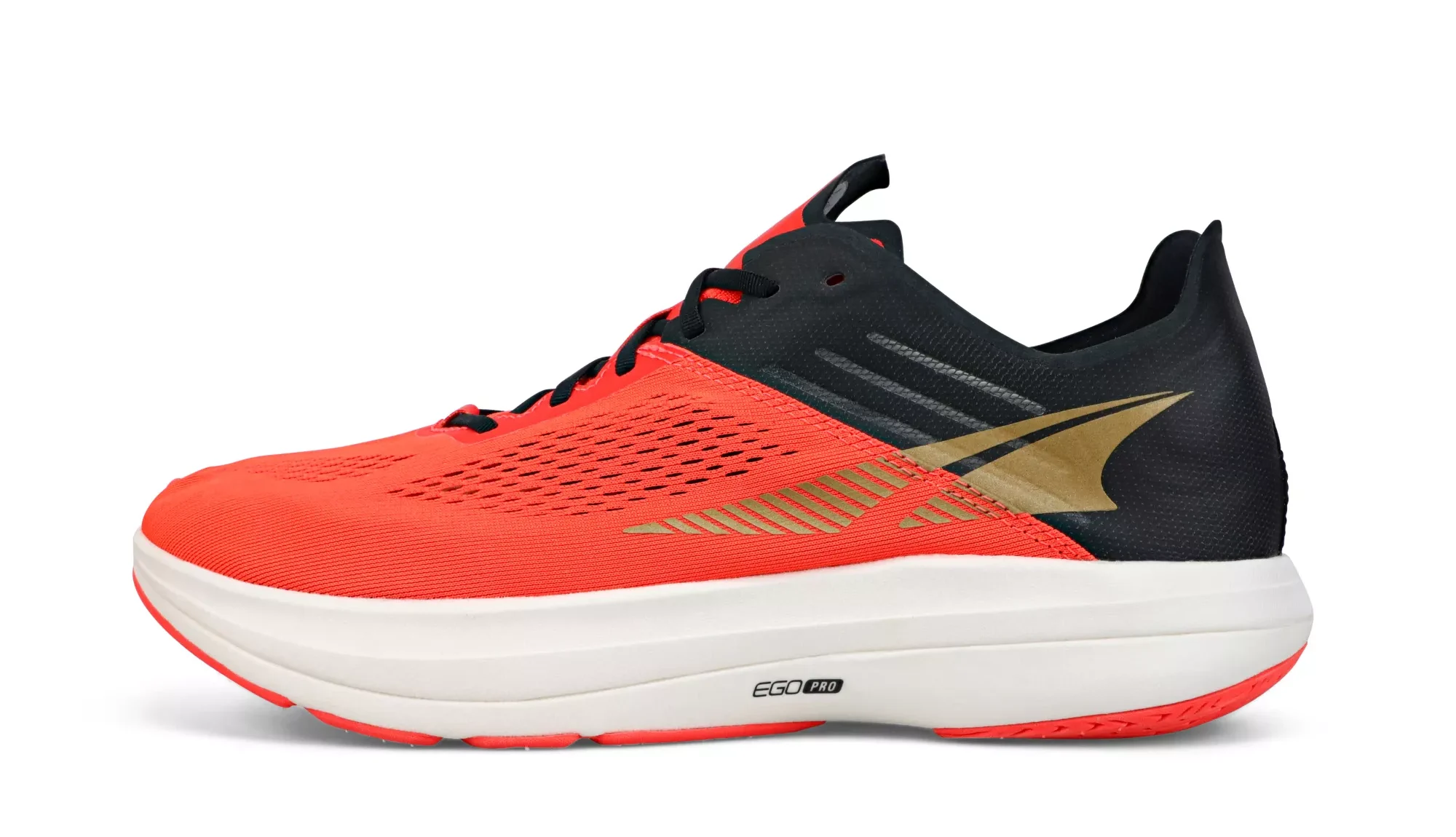
MSRP: $240
Size Tested: US Men’s 8.5 / EU 42
Reviewer: 5’5”, 130 lbs / 165 cm, 59 kg
Intro
After over a decade, Altra has cemented itself in the running industry as a big time player whose anatomic shoes are aimed at promoting healthier running. Often mistaken as “minimal,” they’ve fought to fend off this misnomer by releasing a wide array of models — both road and trail — that vary in their midsole stack heights, stability systems, and intended uses. Now with more than 20 different styles, there’s likely an Altra shoe to meet just about any runner’s needs.
As the Altra fan base continues to evolve, the brand has stayed loyal to two design features fundamental to their identity: every Altra model is built on a zero-drop / balanced cushion platform and has a foot-shaped toe box. Taken together, these two components reinforce the human foot’s natural movement pattern. This style has served them well across their trail running line, with heritage models like the Lone Peak, Superior, Timp, and Olympus each developing a pretty dedicated following. But questions remained about how well Altra’s philosophy would fare on the roads. Let’s take a quick look at how they’ve done so far.
(If you’re here just to learn about Altra’s latest road shoe, the Vanish Carbon, feel free to use the navigation bar to jump ahead)
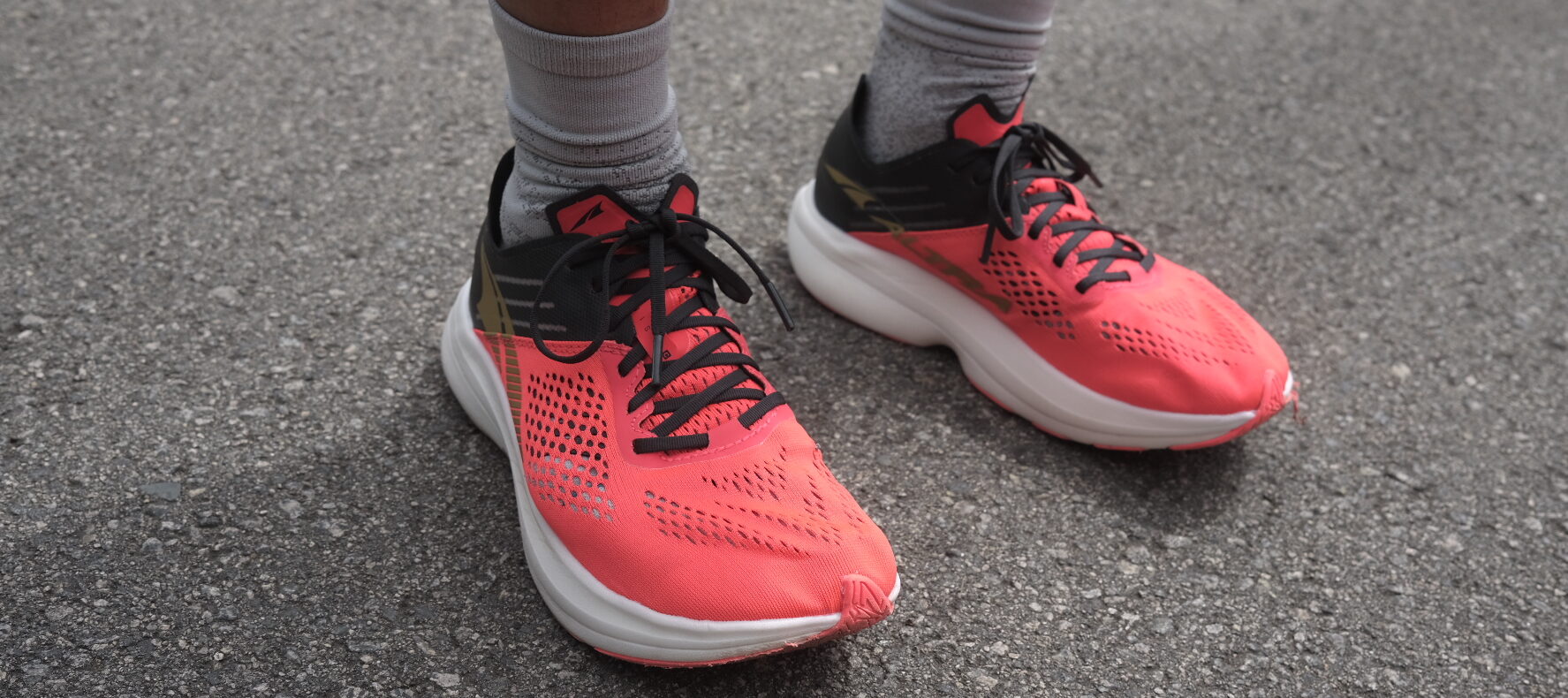
Altra on the roads
Altra’s road running shoes have had great moments in the past decade. The Torin and Escalante models — and all their subsequent offshots (e.g., the Torin Plush and Escalante Racer) — have long been staples in a lot of runners’ shoe quivers. The perfect shoe may not exist, but the more popular models central to Altra’s road lineup seemed to check many boxes for a lot of people.
Altra did have their fair share of misses, though. Their original Vanish models had a moment in the sun, shoes that should ring a bell for Altra devotees. The Vanish-R (for ‘racing’) was a super minimal racing flat for 5k to 10k distances (and personally one of my favorite niche models) and the Vanish XC (for cross-country) was similarly designed for short and fast efforts. Both these models have since been discontinued, likely for their lack of durability and narrow application, but they foreshadowed many of the concepts Altra would later use in shoes like the Vanish Carbon and Vanish Tempo, namely, “let a foot be a foot.”
Marathon racing prototypes
As mentioned previously, Altra’s ethos since the start has always been to let the foot act as naturally as possible. However, as we’ll see, this stance eventually conflicted with the mounting evidence supporting the use of performance plates in road shoes, a piece of technology that seemed quite opposed to Altra’s way of thinking.
One of Altra’s first legitimate road marathoning shoes was the Escalante Racer. Instead of going the way of thick midsoles bisected by performance plates, it featured a simple midsole made from “EGO” foam, Altra’s proprietary blend of EVA. The Escalante Racer’s modest stack height paired well with a unique mesh upper, which allowed the shoe to trim weight. This was a great shoe and a personal favorite, although still very minimal by most standards for its class. Having worn the Escalante Racer for a road marathon once, I found that it failed to provide adequate levels of cushioning during the later stages of the race.
In addition to the Escalante Racer, Altra was rumored to be testing a handful of other marathon-specific prototypes designed in a similar style, with varying stack height thicknesses and different ultralight upper materials. I’d occasionally spot them on the feet of some of their sponsored athletes at races (or on social media), though none of these prototypes lived to see Altra’s production line.
Enter, the Vanish Carbon
In a world where carbon-plated racing shoes have gone from novelty to the default at most starting lines, many major shoe brands are compelled to include a “super shoe” in their lineup to stay relevant in a hyper-competitive and ever-changing footwear industry. While already a major player, Altra is not exempt from this demand, so getting some kind of high-performance, plated shoe from them felt inevitable.
When word started to spread that an Altra carbon-plated shoe was in the works, and photos of prototypes made their rounds on social media, there was a lot of speculation about how exactly Altra could pull this off. The groundswell of excitement around the shoe gave rise to endless questions.
When Altra’s marketing campaign for the Vanish Carbon hit the public, these questions compounded, but interest in the shoe remained high. There was initially a lot of skepticism about its price point. Where the first two Vanish models retailed for a humble $90 and $110, respectively, the Vanish Carbon had an MSRP of a teeth-gritting $240. Dollars mean different things to different people, and after my first 50 miles in the shoe, I’m not completely convinced the Vanish Carbon’s performance lives up to its steep cost. But in this review, I’ll break down where I think the shoe excels, where it falls short, and who I think should have it on their list.
Fit
Considering the Vanish Carbon’s price point, I’d hope that most prospective buyers get a chance to try the shoe on in person, if possible. I’ll provide some context about my own foot type and fit preferences, but your experience might differ wildly depending on your own. I’ve worn Altra shoes for years now and prefer their broader lasts for my wide, high-volume feet. As a runner with a pretty pronounced forefoot strike, I also look for shoes with a secure-fitting midfoot, especially if I plan on wearing them for higher-intensity runs or over long distances. In light of all of this, I had little doubt about the Vanish Carbon’s fit going into this review.
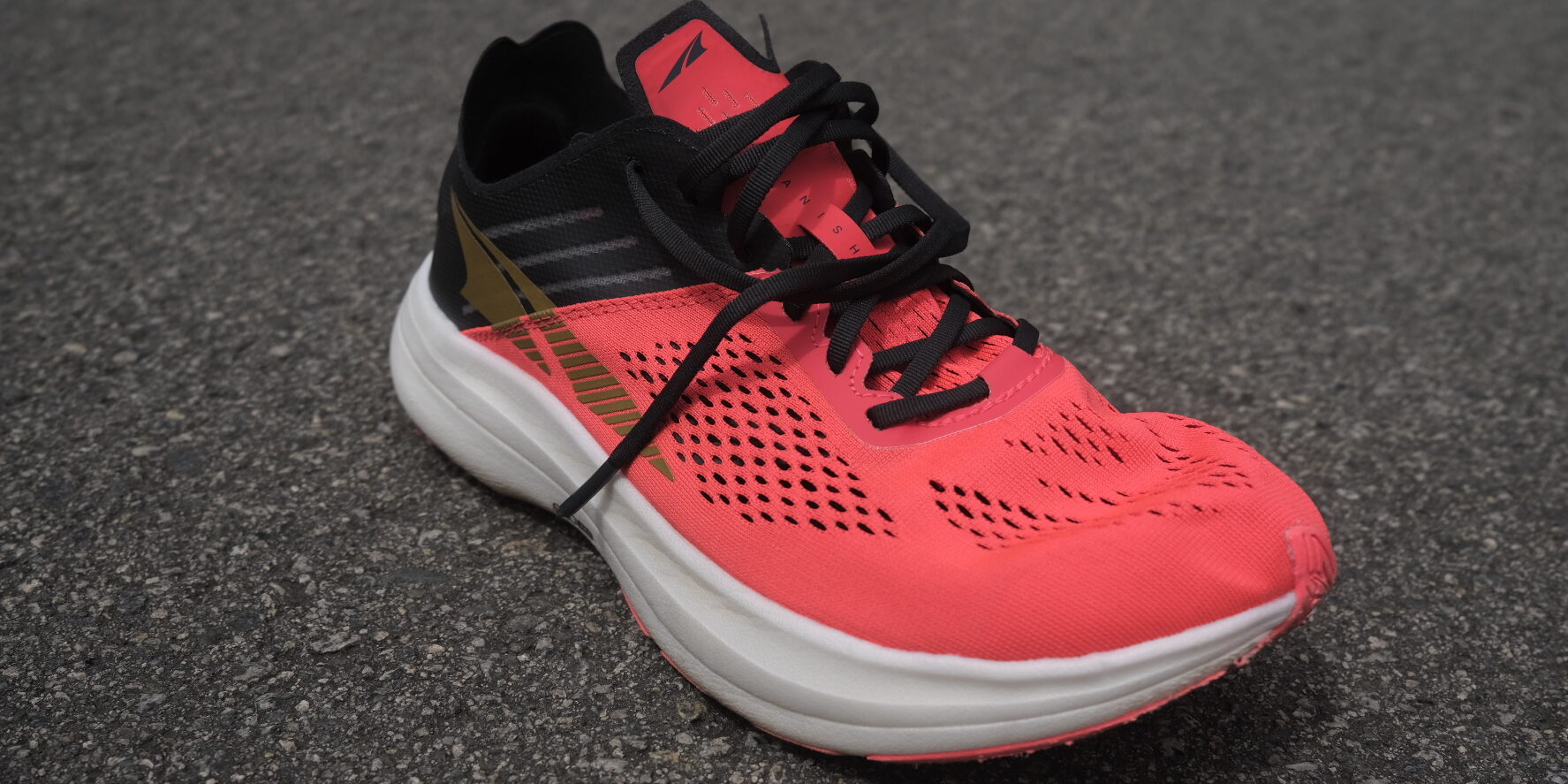
Altra shoes have a pretty distinctive feel, so comparisons to models from brands not using a foot-shaped last are often lacking. With that caveat in mind, the Vanish Carbon is decidedly the best form-fitting shoe from Altra I’ve tried to date. The zero-drop midsole geometry and balanced cushioning underfoot maintained parity with the Altra models I’m used to, and the shoe’s added rocker geometry seemed like it benefited my running efficiency without feeling too alien. Altra clearly paid attention to what its competitors were doing and did a fantastic job integrating some of those design features into the Vanish Carbon, while at the same time staying faithful to their own style. My US Men’s Size 8.5 ran true to size, and despite being built on Altra’s slimmest last, the Vanish Carbon never felt restrictive width-wise.
As a point of reference, the Vanish Carbon’s fit reminded me most of the Altra Torin 3 or the Topo Athletic Cyclone, though with a slightly slimmer toe box and far less sloppy in the midfoot than both. In fact, the Vanish Carbon’s midfoot support brings to mind the “Guiderail” Altra uses in some of their more supportive models, like the Provision 6 and the Paradigm 6. While there’s not much in the way of arch support, the Vanish Carbon is capable of providing significant amounts of lockdown while still allowing the foot to progress naturally through the gait cycle.
Weight
Plates, foams, and rockers aside, the focus of most racing-oriented “super shoes” is rightly on their weight. Deciding what to add and what to subtract from a given model is often negotiated in grams. In the context of a marathon, any ounce that can be shaved off a shoe without compromising its structure can save valuable energy over the duration of a race. At just 206 grams, the Vanish Carbon is one of the lightest “super shoes” on the market. For reference, here’s how its stated weight compares to the stated weights for some other similar models in its category. All weights are based on a US Men’s Size 9.
206 / 7.3 oz — Altra Vanish Carbon
207 / 7.3 oz — ASICS Metaspeed Sky
210 g / 7.4 oz — Nike Zoom Alphafly Next%
213 g / 7.5 oz — Saucony Endorphin Pro
213 g / 7.5 oz — Hoka One One Rocket X
215 g / 7.6 oz — Adidas Adizero Adios Pro 3
221 g / 7.8 oz — Hoka One One Carbon X3
230 g / 8.1 oz — Topo Athletic Specter
As I’ll touch on later in this review, a lot of the reason why Altra is able to get the Vanish Carbon down to such a low weight is because of the shoe’s relatively lower stack height (that “relatively” is key; more on that below). Normally, skimping on foam wouldn’t be the first place I would want to cut a few grams, but I actually think this move benefits the Vanish Carbon in the long run by making it more stable and feel much more substantial than wispy models with similar weights. The best compliment you can give a shoe is to say that you forget they’re there when you’re wearing them, and, in my experience, the Vanish Carbon is definitely worthy of that praise.
Upper
The Vanish Carbon’s upper is made from a perforated engineered mesh that resembles the Vanish-R’s upper in several respects, though the quality of the materials has improved a lot since the Vanish-R’s heyday. There are no overlays for protection or added support, likely a choice made to save weight, and there’s very minimal padding throughout the rest of the shoe. Although it is “foot shaped,” the Vanish Carbon upper uses Altra’s “Slim FootShape” design, which may potentially cause some rubbing for the widest of feet. The heel counter offers some structure, albeit from very flexible material with only a bit of a bumper pad inside the heel collar to hug the area around the Achilles’ tendon. Everything else around the ankle collar is constructed from paper-thin fabric, which could potentially start to dig into ankles over time, particularly for those wearing low-cut socks.
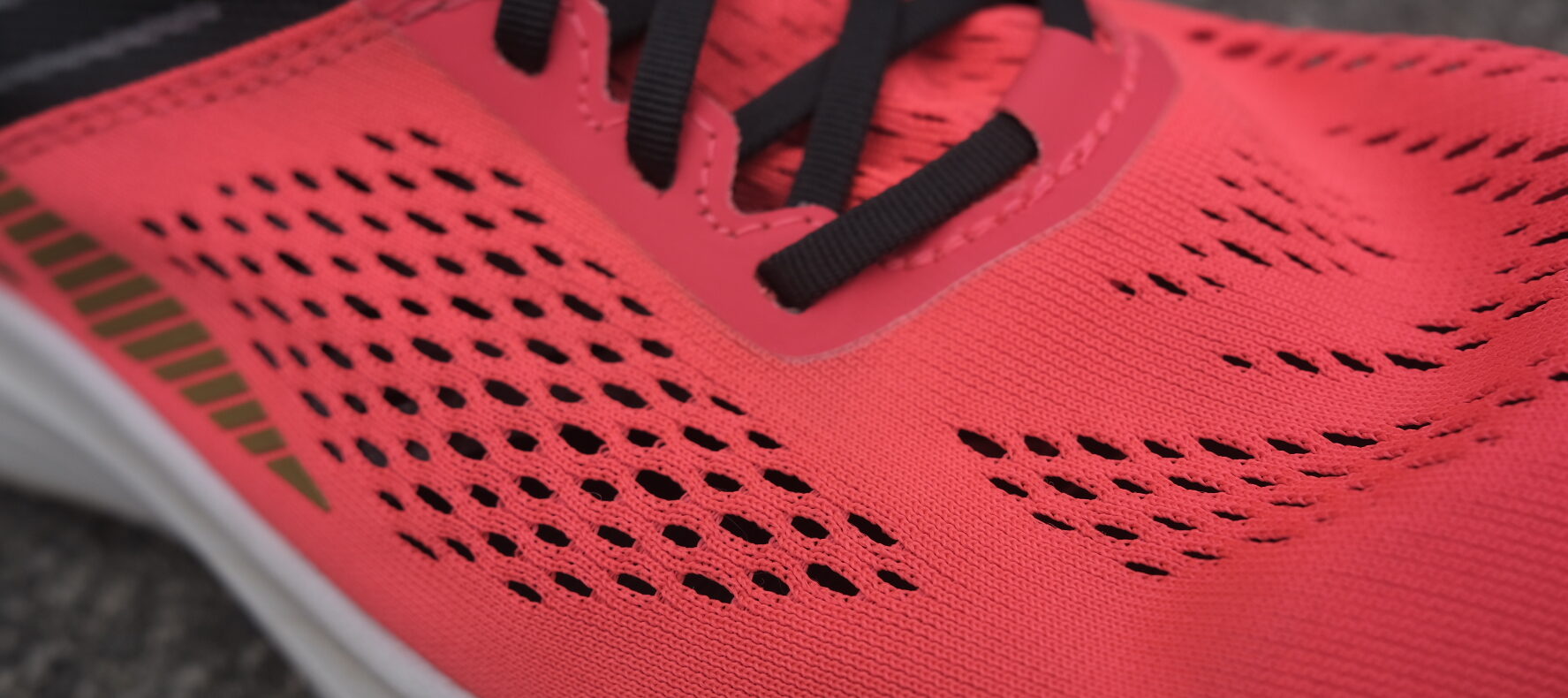
Midsole
The most important aspect of a carbon-plated racing shoe is actually not the rigid plate but rather the material that the plate sits on or in. The Vanish Carbon is the first shoe in Altra’s line to use their proprietary “EGO PRO” foam, which is a very lightweight supercritical TPE that, in my experience, feels somewhere in between most EVA and PEBA foams.
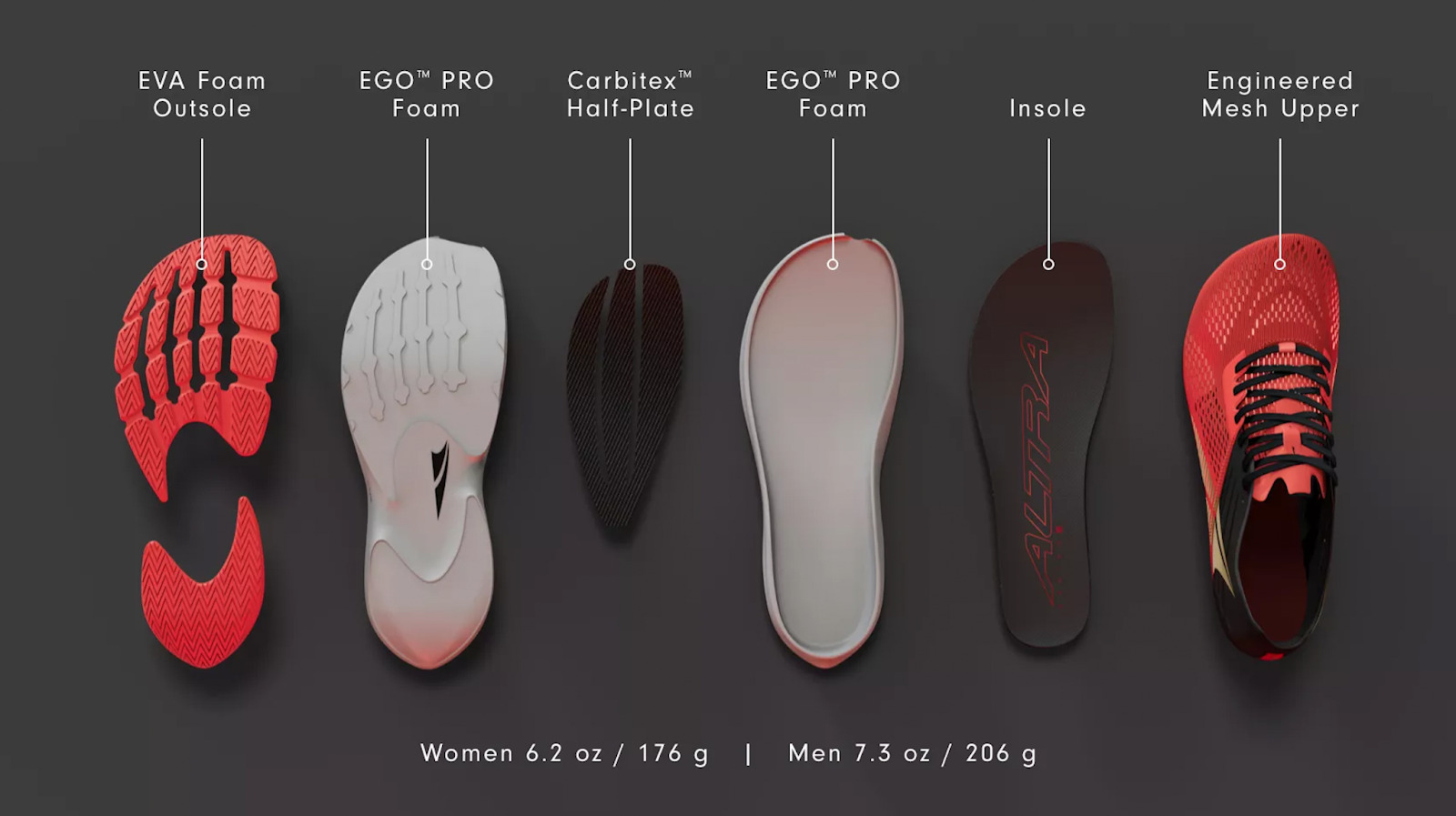
So how does the Vanish Carbon’s debut midsole material actually perform? In a few words: really, really great. EGO PRO doesn’t have the squishy feeling most EVA foams develop over time, and while it’s not as soft and lively as Nike ZoomX foam or what ASICS uses in the Metaspeed Sky, that’s not necessarily a point against it. I feel like the Vanish Carbon’s EGO PRO midsole works with the foot at the same time it supports it, offering just the right amount of both energy return and impact dampening. The shoe’s stock insole is also made with the same EGO PRO foam material as the midsole, which should add just a bit more cushion to the overall feel underfoot.
Designing a zero-drop, carbon-plated shoe for the marathon feels slightly oxymoronic. On one end, most carbon-plated shoes are trying to make the shoe do as much running for the runner as possible. On the other end, a zero-drop shoe seeks to promote the foot’s function and strength as much as possible. In my opinion, Altra has found a way to counterbalance both of these approaches to great success. On foot, I instantly detected the familiar zero-drop design inherent to all Altra models. However, instead of feeling featureless and flat, I felt the shoe’s midsole foam exactly where I needed it most, centered around my forefoot / midfoot. And as I mentioned, the Vanish Carbon’s slightly rockered geometry encouraged my foot efficiently through its gait cycle without feeling inhibiting.
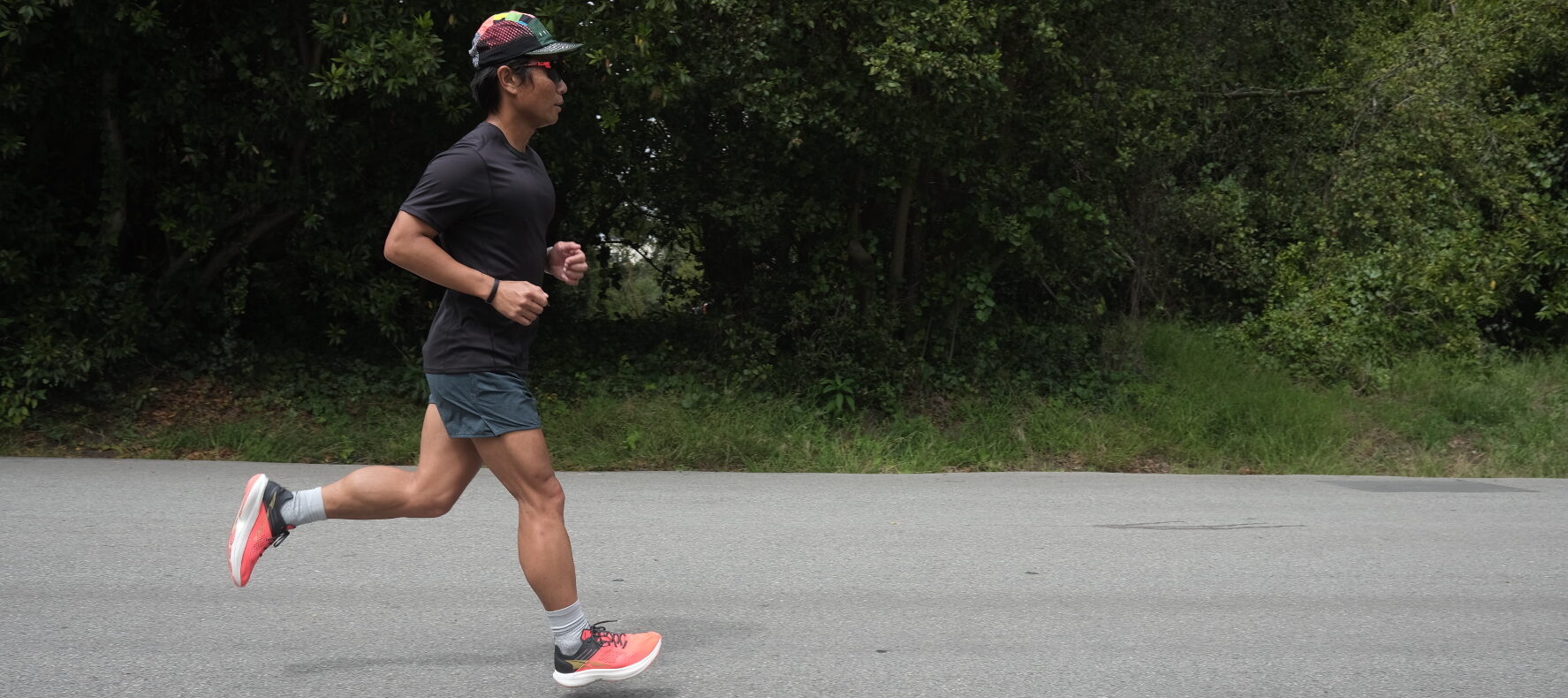
One thing to note is the Vanish Carbon’s “modest” stack height. I’m using scare quotes here because in any other context a midsole thickness exceeding 30 mm would be anything but. However, the Vanish Carbon’s 33 mm worth of stack is relatively short when compared to the measurements of its competitors, which are mostly around 39 mm. I think this is done intentionally with the goal of shaving weight, but I found that the shoe’s slightly reduced stack height made it feel more stable, too. While less foam underfoot might mean less energy return, I never felt like the Vanish Carbon lost any of its pop, even on my longer runs approaching 20 miles.
Carbon Plate
The Vanish Carbon does not feature a full-length carbon plate. Instead, Altra sandwiches a Carbitex half-plate between layers of the shoe’s midsole foam. The plate webs out like a “W” under the forefoot and works dynamically with the foot’s gait cycle, flexing in response to toe-off. The asymmetric half-plate is a unique design that allows the foot to dorsiflex comfortably while remaining stiff at toe-off for a more powerful stride. Most performance plates are firm and unyielding, but those made by Carbitex are reportedly generally more flexible cross-directionally at lower speeds but become rigid when stressed (i.e., at high speeds). Having worn several road shoes with full-length plates, I think that the Vanish Carbon’s half-plate, while unconventional, still equates to comparable amounts of energy return.
Outsole
Looking at the Vanish Carbon’s outsole, there are hardened EVA foam pads strategically placed throughout the forefoot, toes, and heel. I didn’t get a chance to run in any wet conditions during my testing period, but on dry pavement, the shoe’s outsole had no issues finding purchase, at least before it started to rapidly wear down.
Even though durability is not the strong point of any racing shoe, the Vanish Carbon’s outsole at first seemed like it’d both add to the shoe’s lifespan and offer some grip on slick roads. However, after my first 20 miles in the Vanish Carbon, I quickly realized that the hardwearing look of its tread was mainly just for show. Its outsole started to smooth after my first few runs, which then caused layers of foam to show signs of shedding in some areas. I consider myself a pretty light-footed runner and can generally expect long lifespans out of most of my shoes, so this came as a surprise. Altra may have been better off using a durable rubber compound instead of lightweight foam. Instead, I think the Vanish Carbon’s existing outsole is definitely one of its weak points.
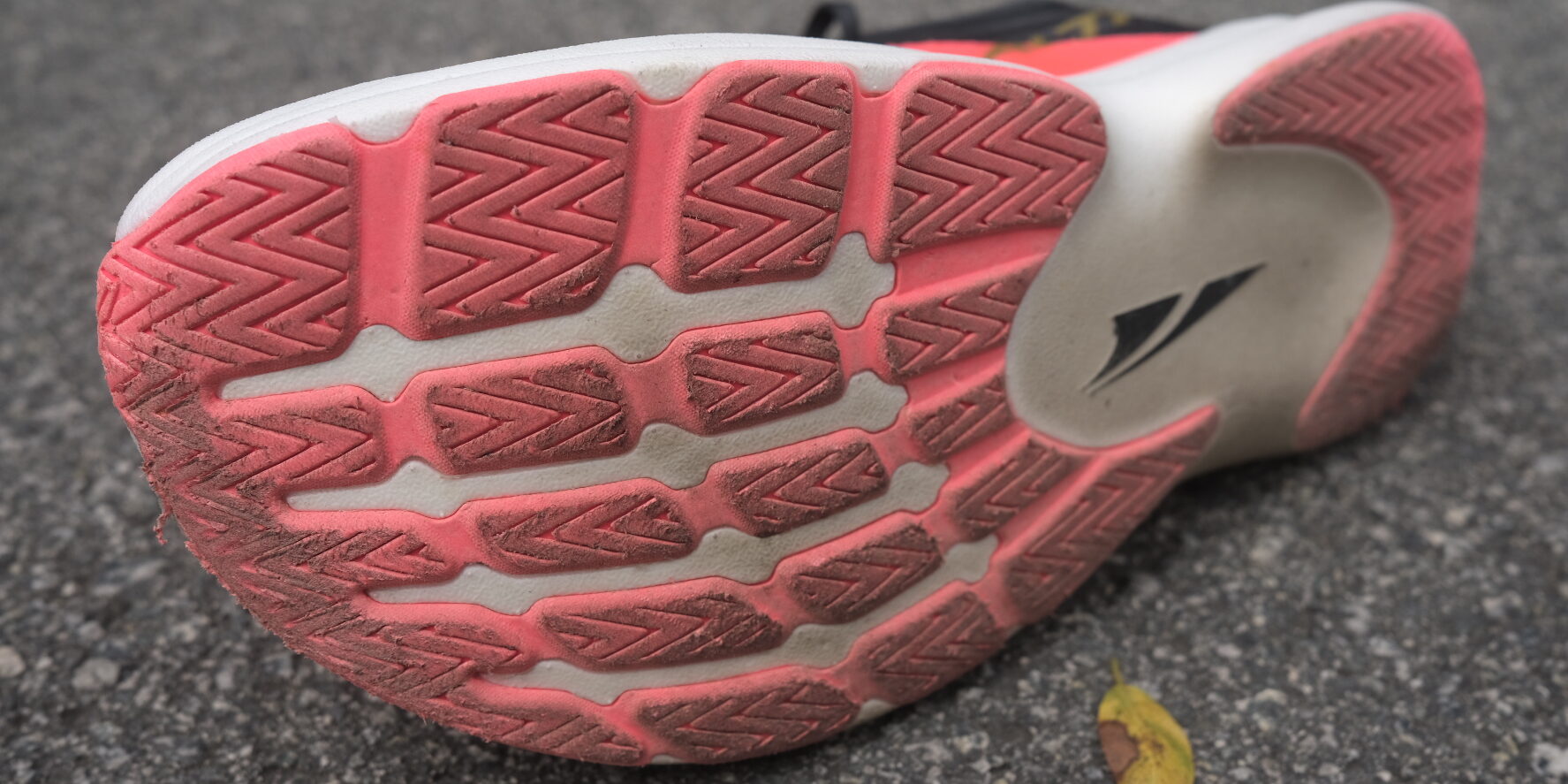
On The Road
Altra clearly invested a lot in the Vanish Carbon. Its level of intricacy is impressive and translates to a unique ride. I have roughly 50 miles in the shoe so far, and while I’ve yet to run a marathon, I have worn them for a handful of race-specific workouts including shorter intervals, tempo runs, and hill repeats.
The most important aspect of the Vanish Carbon is just how balanced and stable each step feels in the shoe. A rigid carbon plate usually creates an unstable landing point, and when coupled with higher stack heights, narrow lasts, and steep heel-to-toe drops, turning or pivoting in these types of shoes can be difficult. I tested the Vanish Carbon on a range of surfaces, including pavement, gravel, and trail, and the sense of control I felt like I had far exceeded any other model I’ve tested in the “super shoe” category.
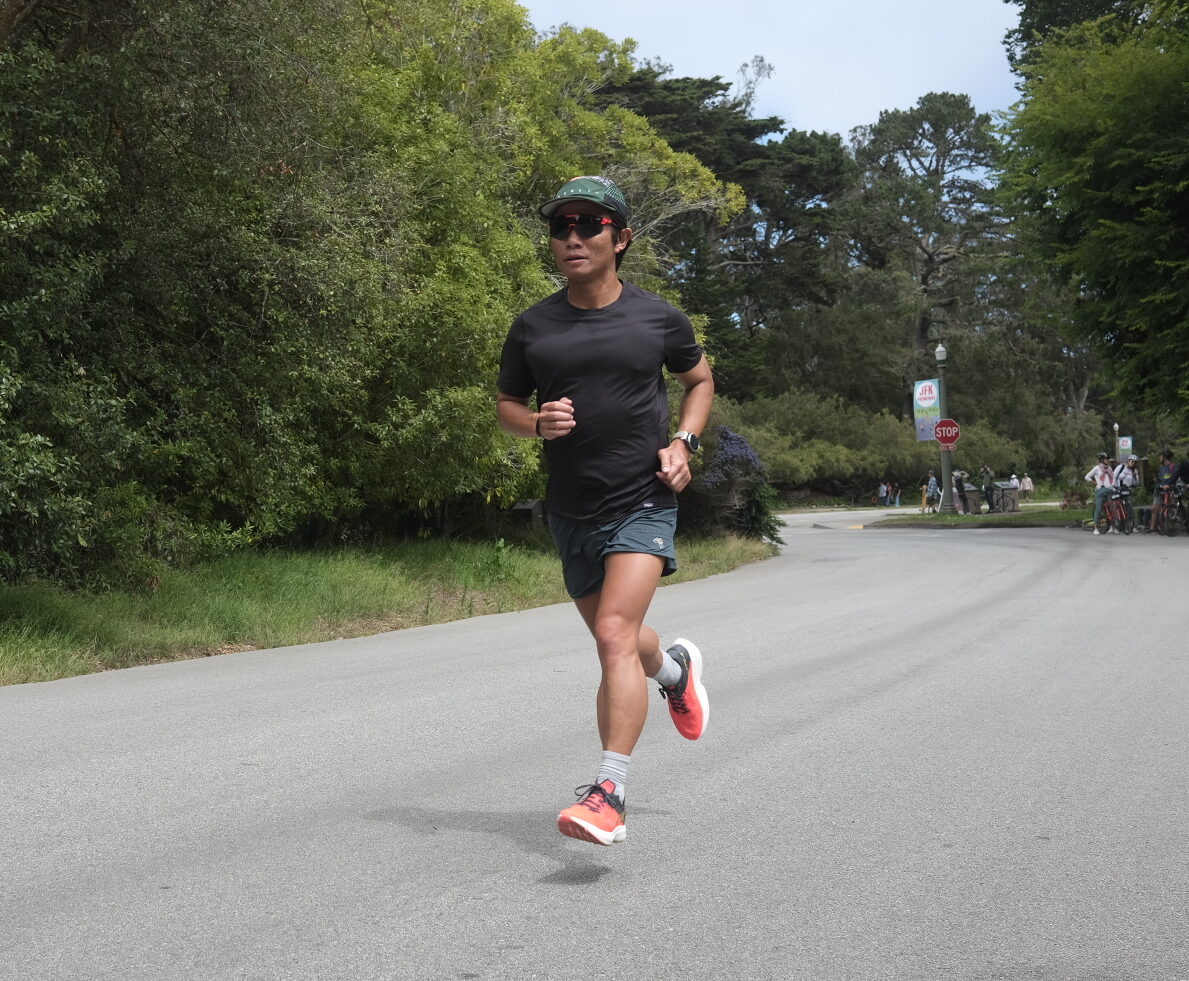
As I mentioned above, my time spent in the Vanish Carbon has mostly come in the form of higher-intensity efforts and key long runs. The shoes even look delicate, so I was conscious about not putting too many junk miles on them, in an attempt to extend their lifespan. This took a bit of self-restraint. When I did wear them, it was hard for me to imagine wanting to run on the roads in anything else. The synergy between the Vanish Carbon’s EGO PRO midsole and carbon plate adapted to my pace, providing suppleness at lower intensities while I recovered in between intervals, before firming up as my speed increased. In contrast, the shoe’s minimal upper did a great job of maintaining a consistent fit from the start of my run to my final steps. All told, the Vanish Carbon is in strong contention to join me on the starting line of my next marathon, assuming it gets there in one piece.
Durability
As the miles ticked by, the Vanish Carbon started to feel a little more clunky and floppy. This very well could just be the nature of supercritical foam. One of the main criticisms of popular “super shoes” reliant on this material (e.g., the Nike Zoom Alphafly Next% and Saucony Endorphin Pro) is their susceptibility to breakdown. Unfortunately, the Vanish Carbon finds itself under the same scrutiny. Carbon-plated shoes are supposed to help with efficiency over time to reduce fatigue, but I think a lot of these benefits were lost once the EGO PRO foam began to pack out. After about 35 miles in the Vanish Carbon, I found myself working harder than anticipated after getting used to how peppy the shoe felt out of the box. However, after feeling some initial decline in the amount of energy return from the shoe’s midsole and the clear signs of wear on its outsole, the Vanish Carbon’s overall feel and performance has plateaued at a level I still think is impressive. How long that lasts will be the big question. The rest of the shoe, including its upper, has remained intact, but if anything changes I’ll be sure to chime back in with updates.
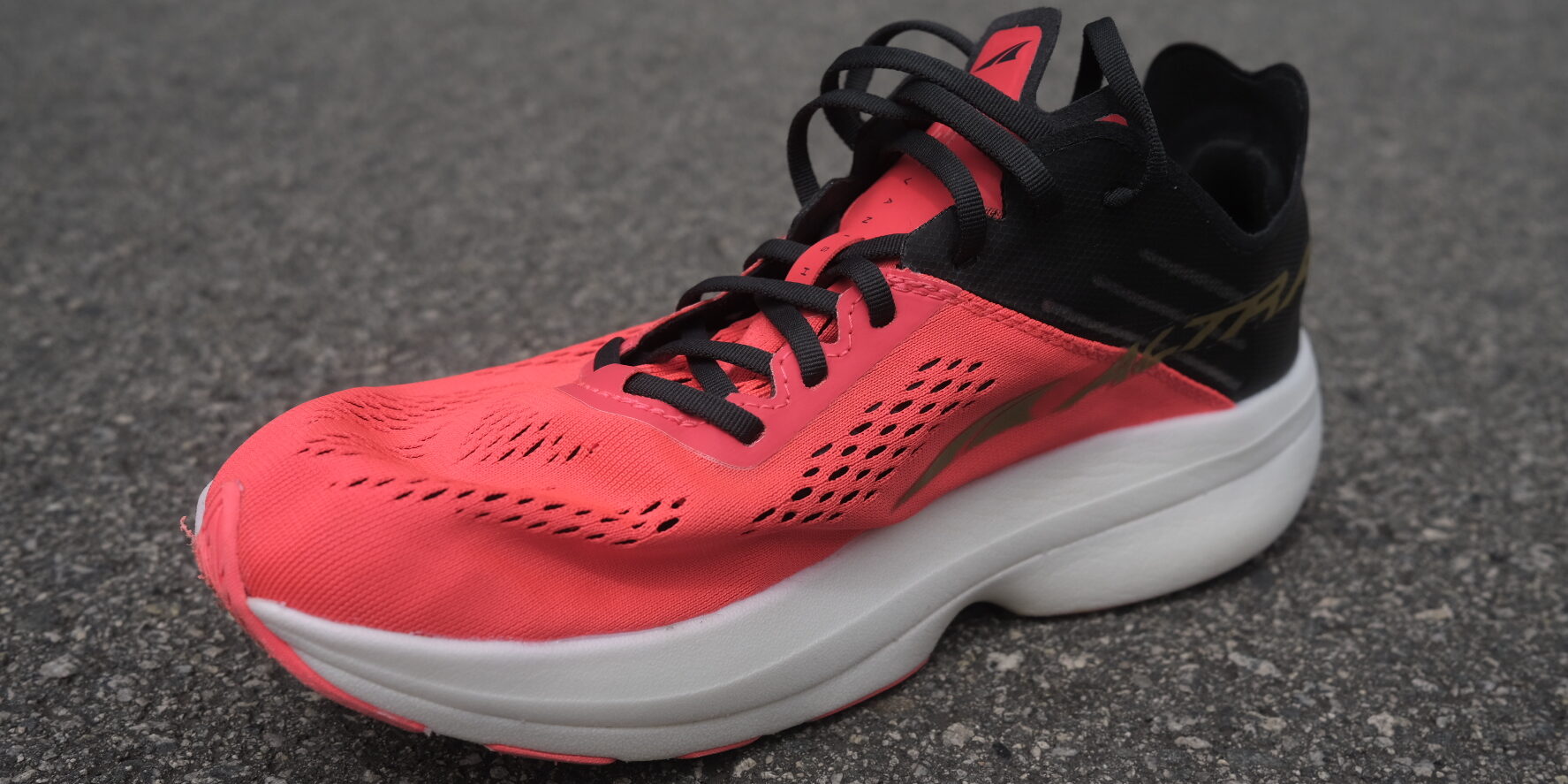
Who’s It For?
It’s tough to find the right category of runner for whom the Vanish Carbon will be perfect. Altra fans and folks who prefer more of a foot-shaped fit will be happy to have this shoe as an option for their road races, and I truly think it can be competitive with all of the other “super shoes” on the market right now.That said, in my opinion, the Vanish Carbon is still not on the same tier as models like the Nike Zoom Alphafly Next% or ASICS’ Metaspeed Sky, which will likely offer better energy return from full-length carbon plates and use foam (ZoomX and Flytefoam Blast Turbo) that should maintain its shape and spring for longer than Altra’s EGO PRO.
The feedback that a lot of carbon-plated shoes receive from runners is that they feel like walking on stilts, or that they’re too rigid, narrow, and restrictive. An ill-fitting shoe won’t help you much on race day, regardless of what it’s made out of. The Vanish Carbon likely won’t feel as fast as other models in its category, but its focus on promoting running efficiency and stability make it a great option for folks who value comfort and security in a shoe. So if the fit, sizing, or ride of other “super shoes” on the market hasn’t completely checked all of the boxes for you, I implore you to give the Vanish Carbon a try.
Bottom Line
Altra’s first foray into the carbon-plated racing scene is very impressive, albeit somewhat improbable. With the Vanish Carbon, they’ve managed to meld two ostensibly opposing approaches to footwear design into a shoe that champions the best features from both — though not without compromises. The Vanish Carbon’s ZeroDrop and FootShaped fit get the most out of the shoe’s premium EGO PRO foam and Carbitex plate, resulting in a ride that’s accommodating, energetic, and stable. While the shoe’s durability concerns, price tag, and potential to underperform relative to models in its niche category will definitely narrow its audience, I still think it’s a great option for folks with wider feet looking for a race-ready “super shoe” that places a strong emphasis on comfort.


